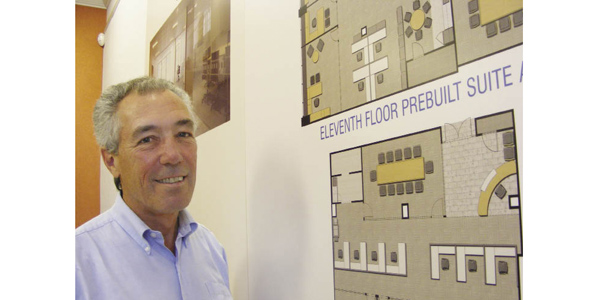Designed to survive
On the eve of the Fourth of July holiday, White Plains architect Norman DiChiara had a long, busy workday ahead. It began with an early morning appointment in Bronxville with a client in the restaurant industry with whom the architect is in negotiations on a project.
At Norman DiChiara Architects P.C., the full schedule of client meetings and projects is not unusual, despite the major blow dealt architectural firms in the recession and the continued stagnant commercial real estate market in Westchester County and the region. DiChiara”™s business volume, though, seems more exceptional than a sign of a widespread rebound in the large and highly competitive community of architects in the county.
“It”™s spotty,” he said of the available commercial work here for architects four years after the recession. “I still think that the industry as a whole, based on my conversations with colleagues, is still not as healthy as me.”
Nationally, the U.S. Bureau of Labor Statistics has forecast a 24 percent increase in employment for architects in the decade from 2010 to 2020, when 141,600 architects are expected to be employed. But that increase is based on employment levels in 2010, when the labor statistics bureau found 113,700 architects at work. Two years earlier, more than twice that number, 230,000 architects, were employed in the months prior to the recession, according to federal statistics.
Since 2008, the architectural industry has declined by 40 percent, said DiChiara, who was a principal at an interior design firm in Manhattan before starting his company in his native Westchester in 1991.
Westchester County, with 810 state-licensed architects at the start of this year, trails only Manhattan and Brooklyn in numbers in the profession in the state. “There are a lot of very good architects in Westchester County and clients have a lot of choices,” DiChiara said. And architects have fewer projects and often reduced fees in a commercial office market with declining rents and tighter landlord budgets.
“It didn”™t get that way for me (a 40 percent loss), but when things went south in 2008, everyone pulled back, myself included,” DiChiara said. “It took about a year for some of my steady clients to get a little more confident and continue on their efforts” with building projects.
As construction and commercial leasing came to a virtual standstill, a health care client, Lenox Hill Hospital in New York City, “was my lifeline, so to speak.” Building projects at the hospital, where DiChiara”™s is one of two architectural firms under contract, sustained his business for about two years.
Development of both inpatient and outpatient medical centers ”“ DiChiara has designed both ”“ is expected to help drive the revival and reuse of commercial office properties in Westchester. “The medical has been on the radar for 30 years,” he said. “Right now, it”™s getting close to its peak.”
DiChiara in his 11-employee business moves regularly between market niches, from hospitals to restaurants to retail stores to corporate office interiors. “That”™s the key to our success, that we are extremely diversified,” he said. “That”™s intentional. We”™re in a couple good market niches. When one declines, the other seems to get more active.”
In the recession, “My retail stopped.” But the architect has since worked on retail projects for Urstadt Biddle Properties Inc., the Greenwich, Conn. developer, as the company has bought a string of shopping centers in Westchester and the region at reduced distressed-property prices and refurbished them.
Before the recession, DiChiara had eight to 10 accounts with national retailers that included Foot Locker, Linens ”™n Things and Kay-Bee Toys.
The architect did about 300 rollouts at Linens ”™n Things stores. “That has died,” he said. “Most of those national retailers are no longer in business.”
But project staff from those companies moved on to other retailers, where they again turned to DiChiara. Those connections have brought him work at three or four Saks Off 5th stores from Chicago to Woodbury Common Premium Outlets in Central Valley.
Big-box doors that have closed to customers and contractors like DiChiara are reopening under new owners. Michael”™s Arts and Crafts, a company expanding into former Linens ”™n Things locations, repeatedly seeks DiChiara”™s assistance when building out retail space with which he is familiar. “That”™s worked out extremely well for us,” he said.
DiChiara has a growing list of restaurant clients, including the Brazen Fox and Ron Blacks in downtown White Plains and Hudson Grille locations in White Plains and Stamford, Conn. Two new restaurants and bars opening in White Plains, Butterfield 8 and Lola”™s, also are his clients.
Architects once could rely on Westchester”™s robust corporate office market for work. Since 2008, “It”™s a lot more difficult on every plateau,” said DiChiara, “from the owner”™s perspective, from the broker”™s perspective.” With rental rates declining and more vacant space, money available for tenant fit-outs from building owners “is at a point I”™ve never seen in all the years I”™ve been doing this.”
The architect”™s fixed fees of 10 years ago no longer hold. With landlords”™ revenue down, “They take it from every avenue that they can,” he said.
